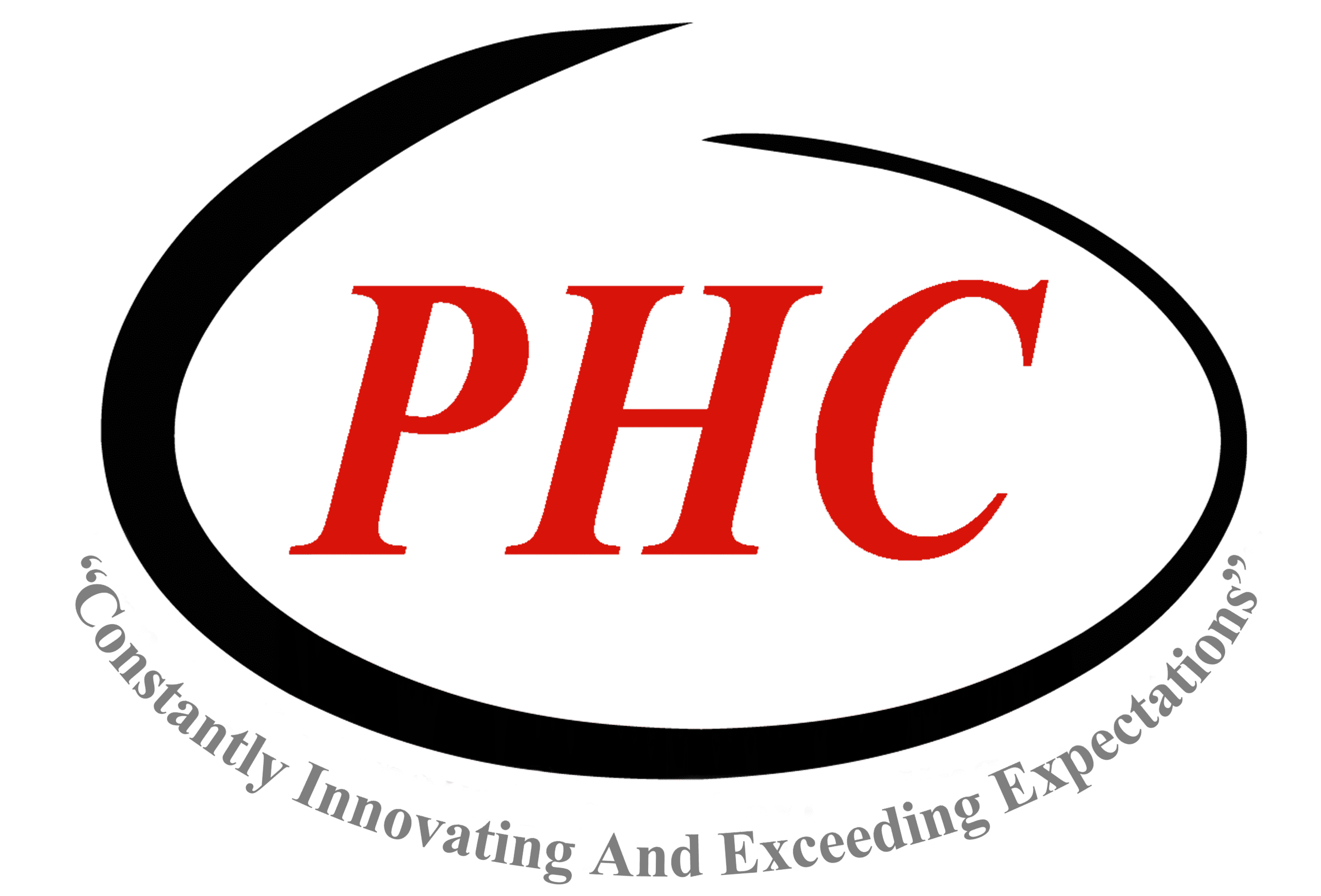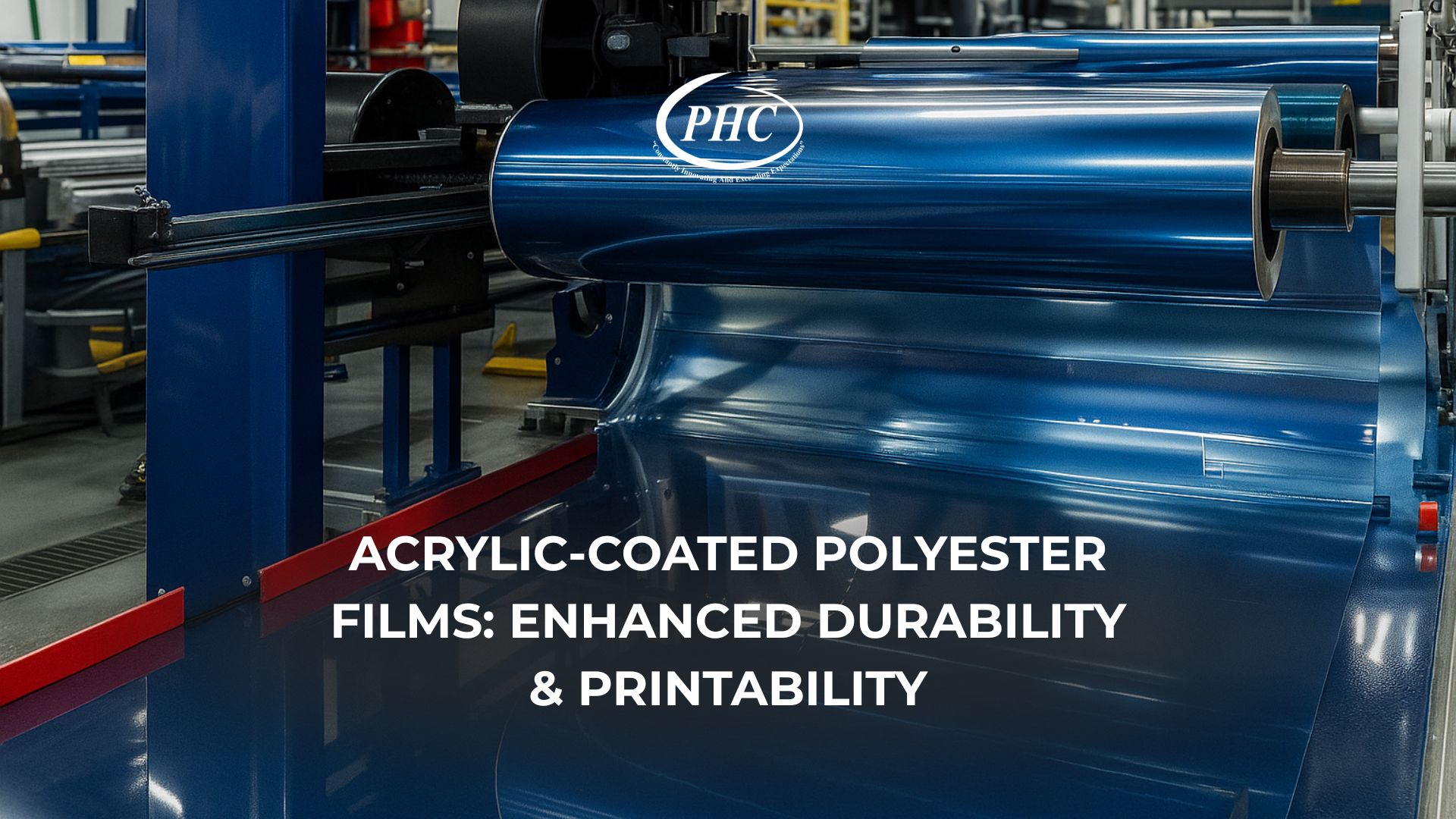If you work in packaging, graphics, or industrial converting, you’ve likely noticed the momentum behind acrylic‑coated polyester films. These engineered PET surfaces pair the mechanical strength of biaxially oriented polyester with an acrylic topcoat that’s built for ink anchorage, abrasion resistance, and chemical durability—without sacrificing optical clarity. The result is a reliable platform for vibrant, long‑lasting graphics and demanding industrial uses.
Pilcher Hamilton Company (PHC) serves converters nationwide from our headquarters at 850 South Buncombe Road, Greer, SC, supplying coatings and precision slitting that help brands and OEMs move faster and print bolder. For teams searching “polyester near me,” our Upstate South Carolina location offers regional responsiveness and decades of converting know‑how—more than a century of service to the converting community.
Explore current options on our Acrylic‑Coated Film Product Page, or pair film supply with our Slitting Services and Coating Services.
1. What Is Acrylic‑Coated PET and How Is It Made?
Definition. Acrylic‑coated PET is biaxially oriented polyester (BOPET) that receives a thin, uniform acrylic layer on one or both sides to enhance surface energy, ink/toner anchorage, scuff resistance, and chemical/moisture holdout.
How it’s made—simplified process flow:
- Base film extrusion & orientation
PET resin is extruded, cast, and stretched in the machine and transverse directions to create a dimensionally stable, high‑clarity base. - Coating application (in‑line or off‑line)
A water‑based or solvent acrylic is applied via gravure, reverse‑roll, or slot‑die. Formulations may include crosslinkers, adhesion promoters, and slip/anti‑block additives. Coating can be one‑side (1S) or two‑side (2S), and different chemistries can be applied to each side when needed (e.g., print side vs. adhesive‑laminating side). - Drying & curing
Controlled ovens evaporate carrier solvent/water, coalesce the acrylic, and promote crosslinking for durability and chemical resistance. - Surface conditioning & testing
Some grades include corona or plasma treatment to achieve target surface energy (commonly high‑40s dynes). QC typically verifies dyne level, coating weight/uniformity, haze, gloss, and adhesion (e.g., cross‑hatch tape tests) before winding. - Converting prep
Master rolls are then slit to width and length. For tight‑tolerance jobs, low‑defect edges and controlled COF (coefficient of friction) simplify high‑speed printing, laminating, and die‑cutting.
What the acrylic actually does:
The topcoat creates a stable, high‑energy surface with durable polymer‑to‑ink bonding sites. Compared to corona‑only PET (which can lose dyne quickly), an acrylic topcoat maintains printability over longer storage windows and after handling, reducing wasted setup time and ink laydown variability.
Need help choosing 1‑side vs. 2‑side coat, or matching coat weight to your ink system? Our applications team can advise through custom trials—see Coating Services.
2. Key Features & Benefits of Acrylic Coatings
1) Vibrant, dependable printability
- Strong ink anchorage for UV/flexo, screen, gravure, and many digital/UV‑inkjet systems.
- Reduced feathering and improved dot integrity for crisp small type and barcodes.
- Consistent dyne retention, lowering make‑ready time and rework.
2) Enhanced durability
- Abrasion and scuff resistance for stacked, shipped, and handled parts.
- Improved mar and rub resistance for labels, overlays, and overlaminates.
- Optional finishes (high‑gloss to matte) maintain clarity while tuning glare and tactile feel.
3) Moisture & chemical resistance
- Acrylic provides a protective shield against water, oils, alcohols, cleaners, and common household chemicals, helping prevent ink smear or label degradation in use.
- Pair with the naturally low moisture uptake and good dimensional stability of PET for long‑life parts.
4) Lamination & converting flexibility
- Reliable adhesion to PSA systems, tie‑layers, and laminating adhesives when specified for acrylic surfaces.
- Controlled COF helps web handling; clean slitting aids tight registration in die‑cutting and kiss‑cutting.
5) Optical quality
- PET’s inherent high clarity and gloss are preserved; matte variants deliver low‑glare readability without milky haze.
6) Heat & dimension stability
- BOPET’s stiffness and low thermal shrink support sharp registration, even under elevated process temperatures common to curing and laminating.
Ready to spec a film for your press and ink set? Start with the Acrylic‑Coated Film Product Page and ask us about trials and made‑to‑order coat weights or finishes.
3. Applications: From Labels to Automotive Panels
Pressure‑Sensitive Labels & Durable Goods
- Prime labels, appliance and equipment labeling, chemical drum and lab labels.
- Benefits: tough overprint surfaces, chemical splash resistance, barcode readability, and long shelf appeal.
Graphics, Signage & Overlaminates
- Indoor/outdoor signage, retail graphics, maps, menus, POP displays, and book covers.
- Benefits: vivid color, scratch resistance, and optional matte coats for glare control.
Industrial Tapes & Masking
- Acrylic‑coated PET functions well as a print‑receptive facestock or protective overlaminate for high‑tack and foam tapes.
- Benefits: consistent anchorage and die‑cut stability.
Flexible Circuits & Electronics
- Labels for electronics, nameplates, insulation layers, and protective films in assembly.
- Benefits: clean edges, clarity for inspection windows, and durable markings.
Medical & Laboratory Packaging
- Pouches, diagnostic strip carriers, ID labels, and device overlays (when appropriate grades are specified).
- Benefits: chemical resistance to disinfectants and handling robustness.
Automotive & Transportation
- Interior overlays, trim badges, protective transport films, and durable barcode labels.
- Benefits: abrasion resistance, consistent print appearance, and heat‑age stability.
Specialty Constructions
- Metallized PET with acrylic topcoats for reflective graphics, or heat‑sealable constructions using compatible acrylic chemistries.
- Benefits: tailored appearance and functionality in one laminate.
Ship faster with slit‑to‑width rolls and labeled cores. See PHC’s tight‑tolerance Slitting Services.
4. Sustainability and Future Trends in Polyester Films
Water‑based acrylics & low‑VOC operations
The move to water‑based acrylic systems reduces solvent emissions and supports safer pressrooms, while maintaining high print receptivity and durability.
Down‑gauging without compromise
Because PET is stiff and strong, converters are down‑gauging (e.g., from 2 mil to thinner gauges) to reduce material usage, shipping weight, and overall resource footprint—without giving up handling performance.
rPET content & circularity
PET’s established recycling streams make it an attractive substrate. Emerging grades with post‑consumer recycled (PCR/rPET) content can be paired with acrylic coats designed for recyclability within PET streams where accepted. (Always check local recycling guidance for printed/laminated structures.)
Performance coatings that do more
Next‑gen acrylics target longer dyne hold, tunable COF, anti‑fog/anti‑smudge, and broader digital ink compatibility. Expect more application‑specific coats (e.g., low‑gloss tactile surfaces, antistatic for cleanrooms) that integrate functionality into the film—reducing secondary steps.
Local responsiveness matters
For teams searching “polyester near me,” proximity lowers lead times, freight, and carbon impacts. From our Greer, SC headquarters, PHC provides regional stocking, custom slitting, and toll coating, backed by a converting heritage that spans over a century. Learn more About PHC.
Quick Spec Snapshot (Typical, Not for Design—Ask PHC for a Datasheet)
- Base polymer: BOPET (polyethylene terephthalate)
- Coating: Acrylic, 1‑side or 2‑side; gloss or matte finishes available
- Typical gauges: 12–75 μm (½–3 mil), with custom options on request
- Print methods: UV/flexo, screen, gravure, many UV‑inkjet systems (always validate with press trials)
- Key properties: Stable surface energy for ink anchorage, abrasion resistance, moisture/chemical holdout, high clarity
- Converting: Compatible with laminating adhesives and PSAs specified for acrylic surfaces; excellent slit & die‑cut behavior
Every pressroom is unique. We recommend a short press trial to validate ink, cure profile, and lamination stack. PHC can supply roll samples with the exact finish and width you need.
Why Pilcher Hamilton for Acrylic‑Coated Polyester Films?
- Application‑matched coatings with help from a responsive technical team
- Slit‑to‑order rolls and labeled cores for fast line changeovers
- Regional logistics from Greer, SC to reduce lead time and freight risk
- A converting partner trusted by industry leaders for 100+ years
Start your project on the right substrate: visit our Acrylic‑Coated Film Product Page, pair it with Coating Services, and finish with precision Slitting Services.

